Tony
and Marion met in La Paz, Bolivia 1963  Tony
was making films for BBC TV with his university colleague and Nonesuch business
partner Mark Howell. An old school friend of Tony's, Allan Reditt was the location
manager. Marion Davies from the University College, Aberystwyth, was a Graduate
Volunteer for the National Union of Students in London and working in Bolivia
with a UN Andean project. Tony
was making films for BBC TV with his university colleague and Nonesuch business
partner Mark Howell. An old school friend of Tony's, Allan Reditt was the location
manager. Marion Davies from the University College, Aberystwyth, was a Graduate
Volunteer for the National Union of Students in London and working in Bolivia
with a UN Andean project.
By chance Marion was based close to Lake Titicaca at Pillapi a UN centre set in
an old Spanish Colonial farm near the ancient ruins of Tiwanaku. Tony and Mark
had visited Pillapi a year earlier (see Around the World 1960-61 Projects). Marion
and another NUS volunteer, Jackie Chester, joined Tony and the film-makers on
two of their expedition journeys. The films: Children of the Lake - the
Aymara people around Lake Titicaca and Treasures of Chuquisaca - the Spanish
Colonial wealth of southern Bolivia. Some
of the story of Treasures of Chuquisaca is on this site - The
Last Supper of San Antonio In
the following two years Tony continued to make films with Mark while Marion worked
for the NUS Graduate Service based in London but travelling extensively in West
Africa and South America. Marion represented Graduate Volunteers on the Council
For Volunteers Overseas chaired by Prince Philip, Duke of Edinburgh. She and Tony
married in 1965. From
1967 - 1970 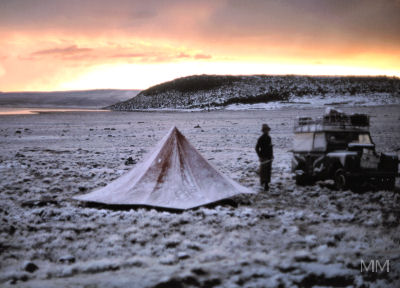 They
travelled the Andes range from end to end in a Land Rover, covering some parts
many times. They
travelled the Andes range from end to end in a Land Rover, covering some parts
many times.
Once
more they were making films for BBC TV and on this journey for Anglia Survival,
a British Independent TV; mostly the films were documentaries about the peoples,
places and wildlife. Tony
who had studied Zoology at Bristol wrote about Andean natural history and the
environment for the book publisher Andre Deutsch, and various wildlife magazines,
while Marion wrote occasionally for the Economist, London, the Guardian and the
Observer. Later
they were in the Falkland islands / Malvinas for two successive summer seasons
to cover wildlife and the salvage of the SS Great Britain for BBC TV and
the Observer. 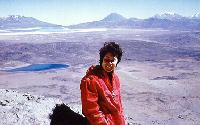 Tony
and Marion continued their lives with South American and later Latin American
and Mexican themed features, films, books and research. Tony has held several
modest positions on Anglo-Latin American societies in London and two Trusteeships.
For two years he was on a Flamingo Committee with the International Council for
Bird Preservation (ICBP),centred at the Smithsonian Institution, Washington and
the Worlds first true conservation organisation. Since 1994 ICBP has been BirdLife
International based in Cambridge, UK. Tony's reports contained observations on
climate variations in the southern Andes as he noticed an upset in the distribution
of rare flamingos. Tony
and Marion continued their lives with South American and later Latin American
and Mexican themed features, films, books and research. Tony has held several
modest positions on Anglo-Latin American societies in London and two Trusteeships.
For two years he was on a Flamingo Committee with the International Council for
Bird Preservation (ICBP),centred at the Smithsonian Institution, Washington and
the Worlds first true conservation organisation. Since 1994 ICBP has been BirdLife
International based in Cambridge, UK. Tony's reports contained observations on
climate variations in the southern Andes as he noticed an upset in the distribution
of rare flamingos.
A
book The Andes for TimeLife International 1975 came from their early Andean
work. Here in the picture on the right Marion is at about 5.500m on the slopes
of Ubinas volcano in southwestern Peru ....taken from one of the chapters for
the book when we made the climb with an old friend Dr Peter Francis, a geologist.
Peter later became Professor of Volcanology at the Open University in England.
He died suddenly in 1999. Highlights The
Manú National Park 1969 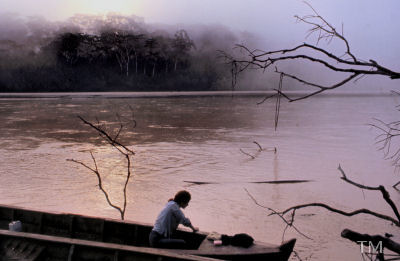 Among
the highlights of their early years in South America, they ventured into untrodden
tropical forest to make the first television film in Peru's now famous Manú
National Park. A Park in Peru BBC TV. Among
the highlights of their early years in South America, they ventured into untrodden
tropical forest to make the first television film in Peru's now famous Manú
National Park. A Park in Peru BBC TV.
The
chance came when Major Ian Grimwood, a noted wildlife conservationist and
adviser to the Peruvian Government wrote to Tony with the news that he
had been shown an area of pristine natural beauty with virtually untouched wildlife.
This area extended from the snowcaps of the Andes to the forests of the Amazon
basin. In the
late 1960s such an El Dorado of animals was rare as hundreds of thousands of skins
or live animals were being exported from Peru - not all were being taken from
Peruvian forests as the trade was not troubled by borders. At the same time the
fringes of the immense Amazon rainforests were being penetrated by roads and loggers.
It was the beginning of the great colonisation stretching from the Pacific to
the Atlantic. 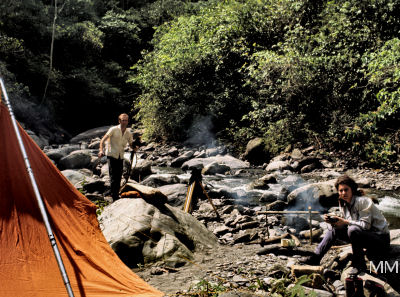 Here
Tony and Marion are in one of the steep and very narrow valleys of the eastern
Andean valleys while searching for a nesting Cock of the Rock Rupicola peruviana-
the Peruvian national bird and a sequence at the end of the film. Here
Tony and Marion are in one of the steep and very narrow valleys of the eastern
Andean valleys while searching for a nesting Cock of the Rock Rupicola peruviana-
the Peruvian national bird and a sequence at the end of the film.
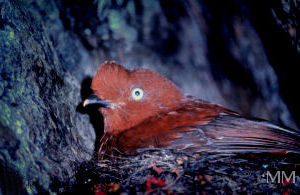 To get just
a few shots took over month, travelling, camping climbing waterfalls and searching. To get just
a few shots took over month, travelling, camping climbing waterfalls and searching.
Photo
note - mostly the film was Kodachrome but a few rolls were on Ektachrome which
have suffered extra fading. Nikon F | | 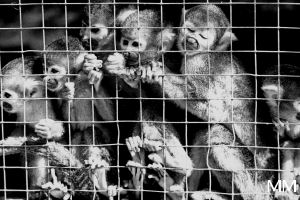 Figures
were not available for 1969 but Ian Grimwood had data for 1964 when 26,266 of
these tiny Squirrel Monkeys Saimiri sciureus were exported from Iquitos,
Peru. In the same year 247,956 animal skins - various were also exported, largely
by air to Miami, Florida Picture in Iquitos in 1969 Figures
were not available for 1969 but Ian Grimwood had data for 1964 when 26,266 of
these tiny Squirrel Monkeys Saimiri sciureus were exported from Iquitos,
Peru. In the same year 247,956 animal skins - various were also exported, largely
by air to Miami, Florida Picture in Iquitos in 1969
From
Park in Peru for BBCTV For
help with this story we must thank David Lorimer who was working in Iquitos and
who has remained a great friend and supporter. Also Sir Berkeley Gage, one-time
British Ambassador to Peru, and Sr Felipe Benavides OBE, a controversial but fanatical
protector of Peruavian wildlife, particularly of the then rare vicuña.
|
The
television film was broadcast at 7.25 PM - a prime time in those years and received
some wonderful comments The
Times, London (sic) - quoted Edward Lear .....There
was an Old Man of Peru Who never knew What he Should Do.....There are some people
in that vast South American hothouse who know exactly what they should do. They
must protect the animals, the birds and the human beings threatened by the bulldozers... ....
Huge bales of skins bore witness to the destruction of wildlife and at
the packing station monkeys penned in their hundreds waited for the export flight.... The
New Scientist, London commented on the political effort to stamp out the trade
- to make matters worse comes the shocking news that in European Conservation
Year an Italian fashion designer is emphasising in advertisments his use of vicuña
wool in his latest collection.... The BBC and Marion Morrison are to be congratulated
on their outstanding Sunday night film. The
Manû National Park as a WWF Project was presented to the world at the Second
International Congress of the World Wildlife Fund (WWF) in London in November
1970. The film Park in Peru was shown and Tony and Marion had a display
of pictures. Their panel was placed between one from Prince Philip Duke Of Edinburgh
- Birds from Britannia and a set from NASA with the Moon landing. 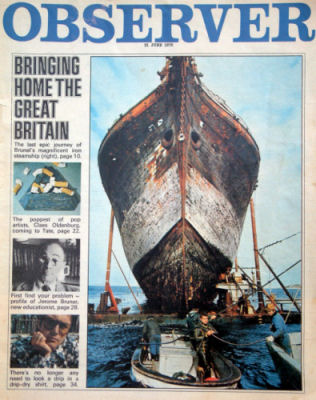 The
SS Great Britain - 1970 The
SS Great Britain - 1970
The
salvage of Isambard Kingdom Brunel's iron steamship the Great Britain in
the Falkland Islands/Malvinas - a BBC TV film, The Observer Magazine with a cover
and main story by Marion timed for the week the old ship arrived back in Bristol. Marion's
pictures were used worldwide and especially in Germany as the salvage firm with
a huge pontoon had come from Hamburg. Our
unique book Saving the SS Great Britain was published
in 2012 and all rights were given to the SS Great Britain charity. This
story combined adventure, a unique maritime salvage and a return to Bristol with
all flags flying. 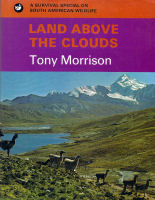 Land
Above the Clouds 1974 Land
Above the Clouds 1974
This
book was commissioned as a joint venture between Anglia Television and the London
publisher Andre Deutsch to accomany the award winning .television wild life series
Survival. Tony began the writing in 1968 and completed the book in 1973 by which
time the span included material from two BBC Natural History Unit documentaries
- one in Peru about the Manu National Park and another in the Falkland Islands
- Malvinas. The
book was distributed in the USA as a similar edition 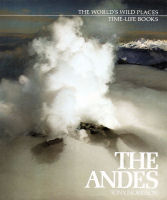 The
Andes - for Time-Life Books 1974 - published 1975 The
Andes - for Time-Life Books 1974 - published 1975
In
the early 1970s the giant American publisher took on the traditional book publishing
world with the concept of large format, full colour and academically supported
books sold by mail order subscription. The books were published in English and
as similar editions in five or six other languages worldwide. Tony
was asked to write The Andes title in the World's Wild Places
series. Marion contributed all the photographs in a picture essay for the featured
Nature Walk into the cloud-soaked montane forest on the eastern slopes of the
mountains in Bolivia. The
assignment took them on a two month journey from the Andes ovelooking the Caribbean
to the icy cold of the glaciers in the far south of Argentina South
American Pictures -1975 Marion's
creation of the South American Pictures archive in 1975 with clients worldwide.
The library began in a small way with requests for publication rights to pictures
taken by Tony from his earliest days of travel in the 1960s including the Middle
East and South America. By the 1980s the library had moved from being a few files
in a filing cabinet to tens of thousands of images. The first catalogue was on
paper but with the advent of the IBM PC the archive became a resource specialising
in Latin America to be known worldwide. 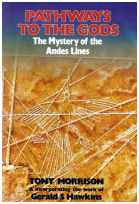  The
Nasca Lines 1963-1968-1978-2004 The
Nasca Lines 1963-1968-1978-2004
Tony's
work on the centuries old markings on the Peruvian desert with three films for
BBC TV, Bayerisher Rundfunk and Netherlands TV, two books and lectures to the
Royal Geographical Society, London. The 1963 black and white TV film was
the first to introduce Maria Reiche 'the lady of the lines' to a worldwide audience.
A German schoolteacher who went to Peru in the 1930s and after World War II, she
lived almost permanently on the desert in Nasca while trying to find a solution
to the puzzle of the lines and drawings. She died in 1998. Here
on the right, Tony is working from a ladder much as Maria Reiche in Nasca did
in the early days.  The
Royal Geographical Society, 150th Anniversary, London May 1980 The
Royal Geographical Society, 150th Anniversary, London May 1980
Tony
was one of a panel of six specialists to address the Society in an evening devoted
to Deserts and Savannas. The meeting was chaired by Lord Hunt the Presisdent of
the Society. Other speakers - Dr.Claudio Vita Finzi, Dr Eidon Edwards, Geoffrey
Moorhouse, Tom Sheppard and Wilfrid Thesiger 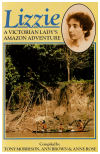 Lizzie,
for BBC Books 1980-85 Lizzie,
for BBC Books 1980-85
Lizzie
stands out as one of the most unusual projects and adventures because the background
was absolutely truthful historically. The
story, told in a series of 19th century letters, was uncovered by Ann Brown a
relative who was helped by Anne Rose, a friend. The letters were passed to the
Royal Geographical Society in London and reached Tony via Dr John Hemming who
at the time was the RGS Director and Secretary. Lizzie
was from a middle-class Victorian family in London and had made an extraordinary
Amazon journey in 1896 at the time of the Rubber Boom. Tony succeeded in following
the route to the place where Lizzie died and he rates it a highlight because the
research took him to some rarely covered parts of Amazonia. BBC TV film and a
book The Isthmus
of Fitzcarrald in Peru was just one of the places so extraordinary to visit today
and yet crossed by Lizzie on mule-back. By real chance, Carlos Fermin Fitzcarrald
played by Klaus Kinsky was the central theme of the Werner Herzog movie Fitzcarraldo
being produced at about the same time.  Margaret
Mee 1988 The book In Search of Flowers of the Amazon Forests with Margaret
Mee, together with the film of Margaret's painting of the Moonflower at night
in the forest. The book published by Nonesuch Expeditions was described by the
Sunday Times, London as '..quite
simply one of the great nature books of the century....' Margaret
Mee 1988 The book In Search of Flowers of the Amazon Forests with Margaret
Mee, together with the film of Margaret's painting of the Moonflower at night
in the forest. The book published by Nonesuch Expeditions was described by the
Sunday Times, London as '..quite
simply one of the great nature books of the century....'
This
book became the focus of a movement to save Margaret Mee's collection of Amazon
Flowers for preservation in the Royal Botanic Gardens, Kew. The story is recorded
in The Margaret Mee Amazon Trust on this website  Marion's
fifty educational books. All of them were profusely illustrated accounts of the
land, people, history, culture and natural history of the Latin American countries,
Mexico and Cuba. Some included details of the economy and politics- often contoversial
subjects to cover. Marion's
fifty educational books. All of them were profusely illustrated accounts of the
land, people, history, culture and natural history of the Latin American countries,
Mexico and Cuba. Some included details of the economy and politics- often contoversial
subjects to cover.
The
books were written mostly for publishers in Britain including Macmillan, Heinemann
and Wayland, and US publisher Scholastic / Children's Press. Marion began writing
the books in the late 1980s and continued into the early 2000s. 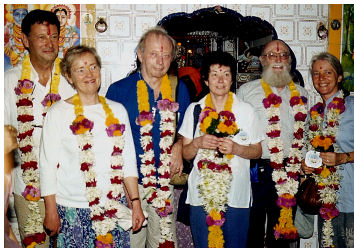 India
2000 India
2000
A short
break with Latin America came when Tony and Marion were invited to Pusegaon a
village in the Deccan India. Tony
had been in Pusegaon with the University of Bristol Trans-Continental Expedition
in 1960, and with two of the original team and their wives made the return journey.
All were given the Freedom of Pusegaon. On
the right - Roger Tutt and Gwen, Tony Morrison and Marion, Peter Krinks [with
beard] and Vera at the first of many receptions. For
more details of the Return to Puseagon - see A
village in India 1960 Roger
Tutt [rear left] died in January 2016 The
New Amazonia 2007 and more with long bus journeys across and around the Amazon
basin to see the changes since we first travelled there. 2008-2009
2010 + 2011 More Amazon bus journeys. 2011
Saving the Great Britain 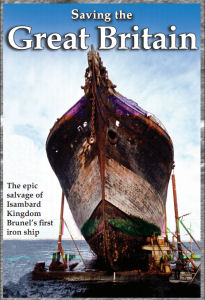 We
took a break to write Saving The Great Britain Mid 2010 marked forty
years since the salvage of the Great Britain and at the various reunions
in Bristol we were urged to write about the historic achievement. We
took a break to write Saving The Great Britain Mid 2010 marked forty
years since the salvage of the Great Britain and at the various reunions
in Bristol we were urged to write about the historic achievement.
In
our collection we had photographs, tape recording of daily reports made in the
Falkland Islands [Islas Malvinas] and many notes. We
were given modest funding by the William Brake Charitable Trust and our project
took much of the year to complete. Our aim was to produce a soft cover book of
the same dimensions as the SS Great Britain Guide published by the SS Great
Britain Trust. We
completed the book in six months and once the first print run was made and checked
for production the entire digital file together with the publishing rights were
given to the SS Great Britain Trust so publishing in perpetuity will raise funds
for the upkeep of the old ship. Marion
was editor, I wrote the text , Ray Sutcliffe was consultant and my old friend
from Taunton, David Elkington Cole was responsible for the design READ At
the time of writing this - 2016 the book is still on sale at the Ship's bookstore 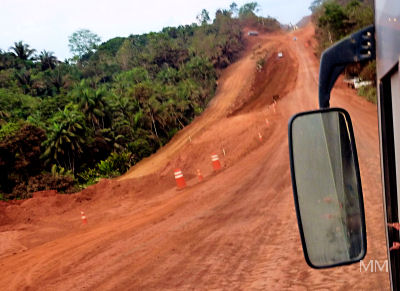 Trans-Amazonica
Highway 2012 Trans-Amazonica
Highway 2012
Tony
and Marion made a special trip to see the state of the Trans-Amazonica highway,
the first major road, and part of a master plan by the Brazilian government of
1970, to cross the Amazon east to west. Subsequent roads coming in from the south
proved more economically successful and over time much of the Trans Amazonica
highway fell into disuse. They
travelled from the Tapajos River, crossed the River Xingu at Altamira close to
the Belo Monte dam site - currently under construction and very controversial
- and reached the Tocantins River at Maraba. Seriously
- for most of the way it's still a dry season journey only. Here is the route
soon after Rurópolis about three hours from Itaituba and only eight hours
to Altamira. Towards the end of the journey, the road is being improved...Ummm...and
the final stretch was tarmac, a welcome relief after 13 hours on the road. Collections
2012 saw the total revision of this website to include all the major
Press records of the University of Bristol Trans-Continental Expedition 1960-61
together with a set of Nonesuch Special Collections. The Collections including
photos, film, tape recordings, diaries and research gathered over the years from
South America, India, the Middle East and Eastern Europe. And
now for something completely different
2013 We returned to South America for the 50th anninversary of our meeting
in La Paz and said goodbye to the very few friends remaining from our 1963 filming
expeditions or even from later days. A
bold decision Then
came a big decision and for the next two years we changed course to Eastwards.
The Bristol University Trans-Continental Expedition had received a big lift-off
with an spread in the Union paper - Eastward to the Andes in bold
headlines. That story is in the University Expedition pages under Press READ 2014
We made a short visit to Romania to see the Danube where I had travelled in 1966.
On my journey upriver I filmed the begining of a huge dam between Romania and
Yugoslavia [this part of the Danube flows through an immense gorge and now has
Serbia on the west bank ] The
dam took another five years to complete and in 1971 several towns were submerged.
We visited the gorge to see the changes especially those made to
the town of Orsova and the historic island of Ada Kaleh, now covered by
still water [See the 1966 Danube story in Features on this site. READ 2015
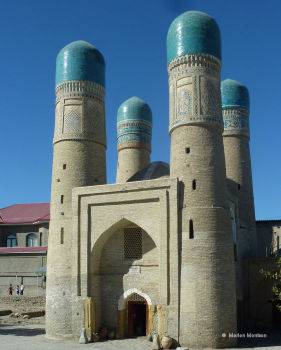 We
made a similar 'return to' journey, this time to the Silk Road cities of Central
Asia. I had been that way in 1962 film-kaking for the BBC TV Adventure
series. Back then I was on the Silk Road in Iran but could not continue into Uzbek
teritory as it was part of the USSR where filming was very controlled. We
made a similar 'return to' journey, this time to the Silk Road cities of Central
Asia. I had been that way in 1962 film-kaking for the BBC TV Adventure
series. Back then I was on the Silk Road in Iran but could not continue into Uzbek
teritory as it was part of the USSR where filming was very controlled. So
getting to the wonderful cities of Bukhara and Samarkand was extraordinary experience
after so many years of waiting. There was so much 'catching up' and drawing from
the recesses of memory some of the regional customs, aromas of spices, the arts
and crafts - It was altogether a re-run of the life I had absorbed during a nine
month journey in the Middle East.  And
Marion? Indeed it was totally new for her but her love of history - she studied
at the University of Wales -so with her fascination for the adventures of the
early travellers our year was packed with a search for detail. And
Marion? Indeed it was totally new for her but her love of history - she studied
at the University of Wales -so with her fascination for the adventures of the
early travellers our year was packed with a search for detail.
On
the left is the Chor Minor mosque in Bukhara - completed in 1807 and on the right,
the walls of the Ark [Arg] also in Bokhara - first built in about 500 AD The
Ark has been heavily restored and this picture was taken just before sunset so
the light enhances the unusual form - photographically - the picture was taken
on film using a Leica M6 and a Leitz 35mm Summicron lens. On the journey I used
film much as I had done in 1962 A
Special 'Thank You' Over
the years not all our productions have run smoothly, a few have been near disasters
and some decidely hard work - life is like that and maybe there will be a place
for these later. Putting the archive in order will be time consuming job but some
of our Collections including the oldest are now listed on this site. As you can
imagine an enormous production by two enthusiasts is not possible without enormous
help. And in the more than fifty years since Nonesuch was created, literally hundreds
of people have given time and energy to assist. We thank all of you and especially
Evelyn Whitfield who has been with us, helping with the collections for over 25
years. 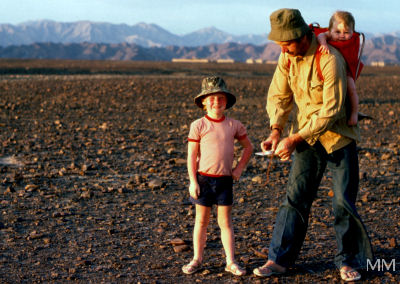 And
- sometimes the Family Came Too And
- sometimes the Family Came Too
The
first journey when the children visited South America was in 1976. Kimball was
just starting school and Rebecca was in a cot. Tony was working on a year long
project for a film and book about the extraordinary spiritual background to the
Peruvian desert markings - by then known as the Nasca Lines. The
research spanned deserts in Peru and the arid highlands of Bolivia. Marion, Kimball
and Rebecca joined him for four months. In Bolivia the family stayed with old
friends from the 1960s and Kimball went to school in the city. But in Peru it
was desert camping with occasional hotel nights for a shower.
Food was plentiful - bread - tinned Peruvian tuna - Peruvian strawberry jam [delicious]
- bananas and porage, local Gloria evaporated milk plus baby food carried from
home for Rebecca. All water was boiled and fruit was peeled. No ill health throughout.
Here Tony and
the family are on the Nasca desert taking measurements and compass bearings. Kimball
also joined Tony on photographic flights in small aircraft over the Nasca desert
and the nearby spectacular Paracas peninsula, its cliffs home to millions of seabirds. 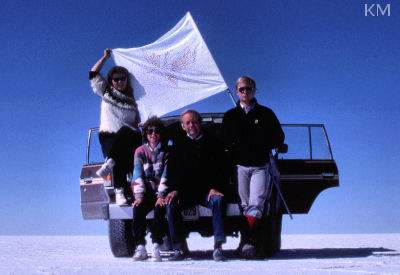 The
family made other short trips together and the penultimate was in 1990 for an
extensive journey with a Toyota 4 x 4 around Bolivia. The date was significant
as it was twenty-five years since Tony and Marion married. The
family made other short trips together and the penultimate was in 1990 for an
extensive journey with a Toyota 4 x 4 around Bolivia. The date was significant
as it was twenty-five years since Tony and Marion married.
They had to move quickly as Tony was preparing for another film and book. Tony
and Marion knew the Salar of Uyuni well from journeys in the 1960s. It is a magnificent
dried bed of a salt lake and is the world's largest extending for approximately
10.500sq kms at an altitude of 3,656m. We
crossed from near the town of Uyuni in the southeast to another smaller saline
lake, Poopo in the north close to an old route used by Spanish waggons in the
17th century. The Salar, a desolate place, was empty apart from a few hardy locals
cutting salt - the great age of Adventure tours had not begun. Rebecca
is holding a flag with the Nasca bird design. From
the salar a track led us via the ancient settlement of Quillacas where Marion
and I had spent days in 1968 looking for signs of early inhabitants. The area
is an arid sparsley populated wilderness and we camped, sleeping in down sleeping
bags under the stars. But even in temperatures dropping to well below Zero C at
night we found small scorpions - fortunately very torpid until the sun was well
over the horizon. Food? Porage and Argentinian corned beef sandwiches with sweet
milky coffee and a luxury - Bolivian 'merengada' biscuits. Argentinian chocolate
bars were a standby. Positions
held This
site lists most of the books and films we have written or produced and here I
will add a few of the positions we have held thanks to our work.
Marion
- in the mid 1960s Marion continued to work for the NUS [National Union of Students]
Overseas Graduate Volunteer Service [GSO]. As a returned volunteer she was appointed
to the Lockwood Committee chaired by HRH The Duke of Edinburgh. The committee
was a 'think-tank' coordinating the work of a number of volunteer services.
Tony
in 1962 he was granted the Fellowship of the Royal Geographical Society [FRGS]
In the early 1970s and still fresh from many journeys in the high Andes of southern
Bolivia, Tony contributed to the Flamingo studies of the International Council
of Bird Preservation, based at the Smithsonian Institution, Washington DC
1978 Elected to the membership of The Explorers Club - [New York]
In
the mid 1980s Tony was asked to be a Trustee of the Bolivian Wildlife Society
[London]. Founder Reginald Hardy who had mining interests was largely responsible
for creating the Amboró National Park in the Andean foothills near Santa
Cruz de la Sierra, Bolivia. A talented British naturalist, Robin Clarke and Noel
Kempff Mercado a Bolivian conducted most of the detailed work on the ground.
A co-Trustee of the Bolivian Wildlife Society [UK} was Margaret Anstee who
became an Under-Secretary-General of the UN and later was honoured by HM Queen
Elzabeth ll with the title Dame Commander. Sadly both Dame Margaret whose heart
was in matters Bolivian and Reginald Hardy are dead and the Bolivian Wildlife
Society [UK] has closed. In her book 'The House on the Sacred Lake'
ISBN: 978 1846243530 Margaret Anstee says she was responsible for introducing
Tony to Marion. That stretches the truth but it's close.
In
the late 1980s Tony was a committee member of the Anglo Peruvian Society
and then later Chairman of the Society. He was a committee member of the Anglo
Bolivian Society. Both Societies were based in London and as their names imply
they bring together Peruvian, Bolivian and British cultural interests.
Also
in the late 1980s Tony was a co-founder with Dr.Simon Mayo of The Royal Botanic
Gardens, [RBG] Kew, of the Margaret Mee Amazon Trust. The aims and objectives
of the Trust are outlined on this website. The Trust was closed in the late 1990s
and its work was passed to the RGB Kew.
From
the late 1980s into the 2000s Tony was a Trustee of the Yavari Project,
a London based charity with the aim of restoring and using the Victorian Steamship
Yavari on Lake Titicaca, Peru.
Tony
and Marion - In 2000 - Tony and Marion were given Honorary Citizenship
of Pusegaon, a small town in Maharashtra, India [they were in Pusegaon with
Roger and Gwen Tutt and Peter and Vera Krinks on a visit to mark forty years since
the University of Bristol Expedition visited the original village. See Pusegaon
Reunion 2000
Now
for the future In
2016 Tony clocked his 80th year and decided it was time to work closer to home
He says 'I have always felt that I need to produce something to justify getting
on a flight to anywhere. Travelling just for the sake of it has never been an
option. So as a starting point for a new project I have chosen the Quantock Hills
in Somerset close to where I grew up' See
Return
to the Quantocks
|